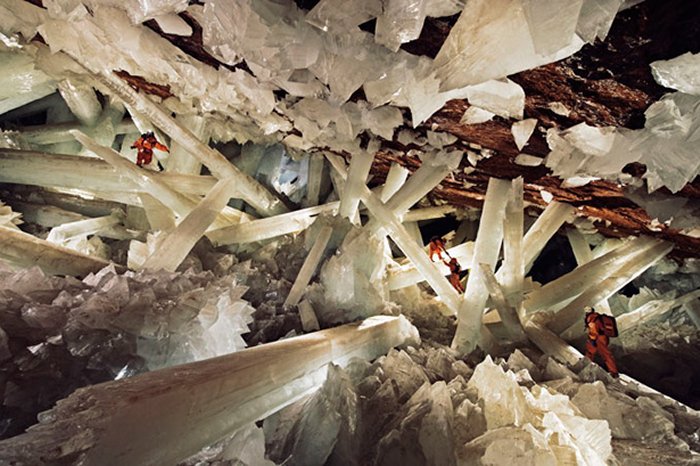MessageToEagle.com – Scientists have made a truly remarkable in one of the most beautiful places on Earth.
Hidden deep inside the famous giant crystals caves of the Naica mountain in Mexico, researchers have unearthed a completely new ancient life-form that has never been encountered before.
It’s a weird life form that changes our understating of biology.
The Naica crystal cave in the state of Chihuahua is located 300 meters below ground. It’s an amazing place filled with enormous, spectacular selenite or moonstone crystals.

The cave was opened for the first time by miners looking for silver and other metals a hundred years ago.
Since then, this place has been of great interest to scientists fascinated by extremophiles – microbes that can thrive in seemingly impossible conditions.
NASA researchers have now identified long-dormant microbes living in the walls of the caves even though there is “no light at depth” inside. This means that microbes were able to use chemosynthesis to survive. This is a process wherein they derive their energy by processing rock metals.
It is estimated the microbes are least 10,000-year-old, but they could also be as old as 50,000 years.
The Director of NASA’s Astrobiology Institute in Moffett Field, California Dr. Penelope Boston, who made the discovery, made the revelation during the annual gathering of the American Association for the Advancement of Science (AAAS) on Friday.
See also:
Spectacular Marble Caves In Patagonia, Chile – Marvelous Treasure Of Our Planet
Extreme Life In Poisonous Pitch Lake Filled With Hot Asphalt And Toxic Heavy Metals
Mysterious Substance Living In The Nullarbor Caves
“Other people have made longer-term claims for the antiquity of organisms that were still alive, but in this case these organisms are all very extraordinary – they are not very closely related to anything in the known genetic databases,” Dr Penelope Boston said.
Boston also explained that the discovery of various organisms in the Mexican caves has made her realize that there is a “great diversity of life” and the concern that these organisms might simply be the result of contamination is unlikely.
“Other groups have shown there are lots of viruses in these caves and what that says to me is that these are fully fledged microbial communities that have their viral load just like every other community does,” she said. “So, that’s another aspect of this that argues against casual contamination.”
The discovery is intriguing and significant because it reveals how certain organisms possess the ability of life to adapt and cope in the most hostile of environments.
MessageToEagle.com
Expand for references






